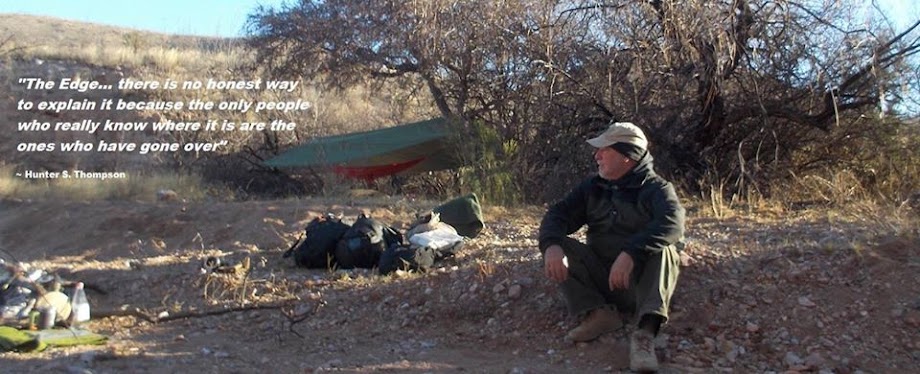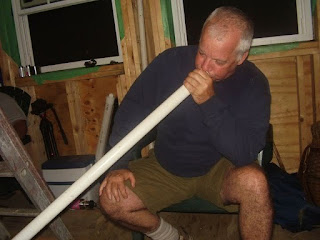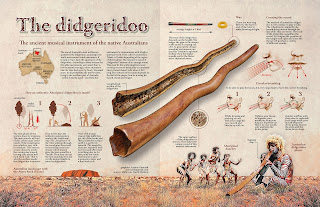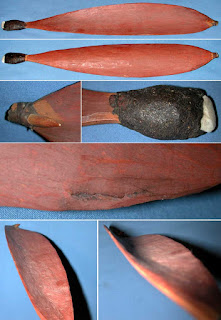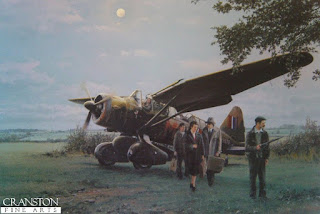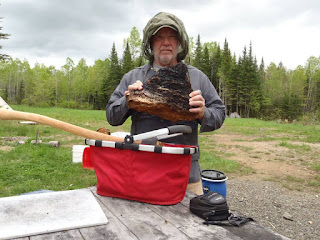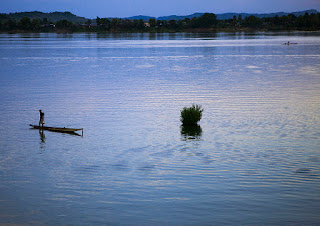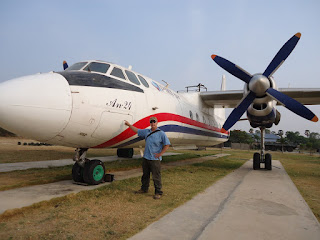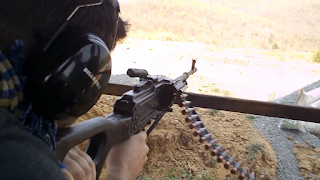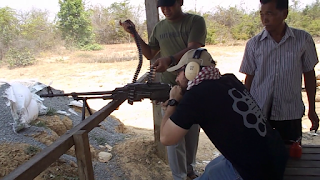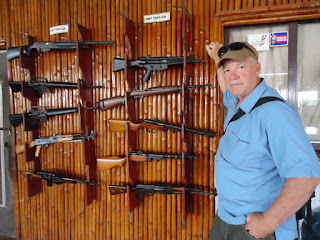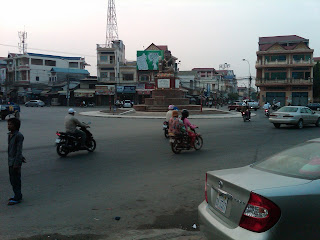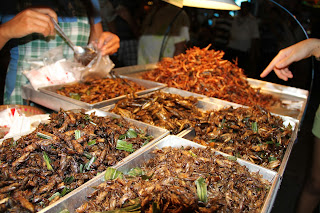In Maine at the Jack Mouintain Bushcraft school, we enjoy collecting chaga and processing it for tea and Kombucha. Each wilderness we embark on with students includes training and education on the local edible & medicinal plants of the area. Many of our students in the past have tried chaga and enjoyed it. One student, I remember fasted and consumed only chaga and water for several days. He managed to maintain his strength and energy levels on this "diet".
Although
there is a lot of conflicting information about how to brew chaga Tea, I have found that simply steeping the chaga for 6 to 8 hours yields the best results. At home you can also use your crock pot and brew 12 cups of tea over night from 1/4 cup of chaga. And additionally, I have found that you can reuse the chaga a 2nd time.
If you live in birch country head out to the woods and look for some chaga, it is fun to search for and is great for your health.
CHAGA - Inonotus obliquusInonotus obliquus, commonly known as chaga mushroom (a Latinisation of the Russian term 'чага'), is a fungus in the family Hymenochaetaceae. It is parasitic on birch and other trees. The sterile conk is irregularly formed and has the appearance of burnt charcoal. It is not the fruiting body of the fungus, but a sclerotia or mass of mycelium, mostly black due to the presence of massive amounts of melanin. The fertile fruiting body can be found very rarely as a resupinate (crustose) fungus on or near the clinker, usually appearing after the host tree is dead. I. obliquus grows in birch forests of Russia, Korea, Eastern and Northern Europe, northern areas of the United States, in the North Carolina mountains and in Canada.The chaga mushroom is considered a medicinal mushroom in Russian and Eastern European folk medicine; medical evidence is emerging.
Alternative names:The name chaga (/ˈtʃɑːɡɑː/ ) comes from the Russian word of the mushroom (anglicized from чага), which in turn is purportedly derived from the word for the fungus in Komi-Permyak, the language of the indigenous peoples in the Kama River Basin, west of the Ural Mountains. It is also known as the clinker polypore, cinder conk, black mass and birch canker polypore.
In Norwegian, the name is kreftkjuke' which literally translates as "cancer polypore", referring to the fungus' appearance or to its alleged medicinal properties. In Finnish, the name is pakurikääpä, combined from pahkura and kääpä translating as "wart polypore".
In England and Canada, it is known as the sterile conk trunk rot of birch, which refers to the fruiting bodies growing under the outer layers of wood surrounding the sterile conk once the tree is dead, to spread the spores. In France, it is called the carie blanche spongieuse de bouleau (spongy white birch tree rot), and in Germany it is known as Schiefer Schillerporling (oblique Inonotus). The Dutch name is berkenweerschijnzwam (birch glow mushroom).
Medicinal research:Chaga has been used as a folk remedy in Russia and other North-European countries for centuries and it featured in Alexandr Solzhenitsyn's 1967 novel Cancer Ward.
Research on the health effects of I. obliquus has shown that extracts of it can hamper the growth and proliferation of tumors as well as have positive effects on the immune system.
Though, according to the Memorial Sloan–Kettering Cancer Center, "no clinical trials have been conducted to assess chaga's safety and efficacy for disease prevention or for the treatment of cancer, cardiovascular disease, or diabetes".Laboratory studies on extract of chaga mushroom has indicated possible future potential in cancer therapy, as an antioxidant, in immunotherapy, and as an anti-inflammatory.
Cultivation:Geographically this fungus is mostly found in very cold habitats. It grows very slowly, suggesting it is not a reliable source of bioactive compounds in the long run. Attempts at cultivating this fungus on potato dextrose agar and other simulated mediums resulted in a reduced and markedly different production of bioactive metabolites. Secondary metabolites were either absent or present in very different ratios, and in general showed significantly less potency in submerged cultures of Chaga.
Cultivated Chaga furthermore results in a reduced diversity of phytosterols, particularly lanosterol, an intermediate in the synthesis of ergosterol and lanostane-type triterpenes. This effect was partially reversed by the addition of silver ion, an inhibitor of ergosterol biosynthesis.
Additionally, the bioactive triterpene betulinic acid is completely absent in cultivated Chaga. In nature Chaga grows pre-dominantly on birches, and birch bark contains up to 22% of betulin. Betulin is poorly absorbed by humans, even when taken intravenously; its bioavailability is very limited. However, the Chaga mushroom converts betulin into betulinic acid, and many internet sources state Chaga's betulinic acid is bioavailable, even when taken orally. Unfortunately there is no research that confirms this claim.
Preparation:Chaga is traditionally grated into a fine powder and used to brew a beverage resembling coffee or tea. For medicinal use, an extraction process is needed to make at least some of the bio-active components bioavailable.
These bio-actives are found in the mostly indigestible chitin cell walls of the chaga. Humans lack the enzyme chitinase, so cannot fully digest raw mushrooms or their derivatives, and the digestive process works too fast for the stomach acid to take effect. Scientific studies and research are in general also based on highly concentrated extracts, and traditional Russian usage is also based on a form of hot-water extraction (by preparing zavarka).Currently, three extraction processes are used, each with a different outcome.
Hot water extraction is the most common and the cheapest method. Ideally it should be performed under very high pressure (480 psi / 4.0 MPa); boiling will over time cause the bioactive beta-glucans to disintegrate, this is neutralized by performing this phase of the extraction process under high pressure.
All water-soluble components will be present in the resulting extract. Hot water extraction performed without high pressure can be compared to a traditional tea-making process; the therapeutic potential will be limited due to the damage caused by the high temperature, as described above. Water-insoluble components, such as phytosterols, betulinic acid and betulin, will be absent in a hot water extract. Several extraction rounds combined with modern pharmaceutical techniques such as alcohol precipitation as a final step can result in high levels of polysaccharides, up to almost 60%. The ß-D-glucans, the bio-active part of these polysaccharides, might add up to ±35% in a very pure extract. Polyphenolic components are water-solubles and will also be present.
Ethanol or methanol extraction isolates the water-insoluble components, betulinic acid, betulin and the phytosterols. This extraction process is in general used as a second step after hot-water extraction, since ethanol alone will not break down chitin effectively - heat is essential.
Fermentation is the most time-consuming, so is the most expensive; this method is not used very often. Because fermentation methods are not standardized (many types of bacteria and fungi can be used in the process), the outcome is also not standardized.
Combining the outcome of hot water and ethanol extraction yields a dual extract with all therapeutically interesting bioactives present in a bioavailable form. Cheap, mass-produced extracts are in general hot water, low percentage (4-20%) polysaccharide extracts with limited therapeutic value. The information on the supplements' label will usually reveal inclusion or exclusion of components. However, the majority of mushroom dietary supplements that are sold are non-extracted, being the cheapest option.To achieve at least some therapeutic effects the consumer has to make a tea from it.
